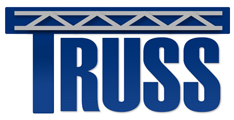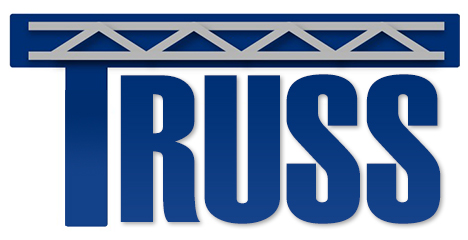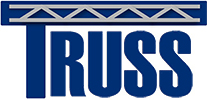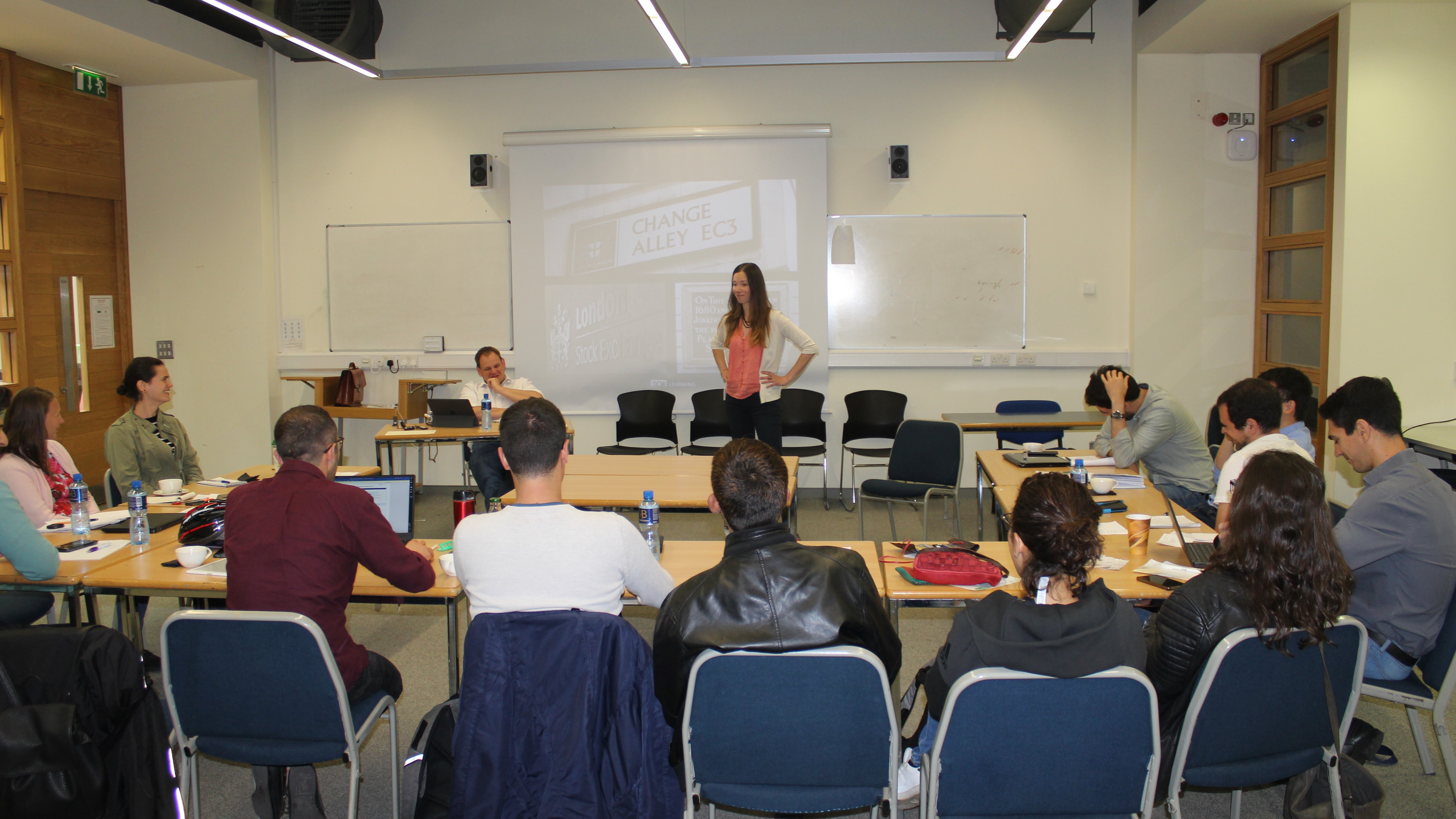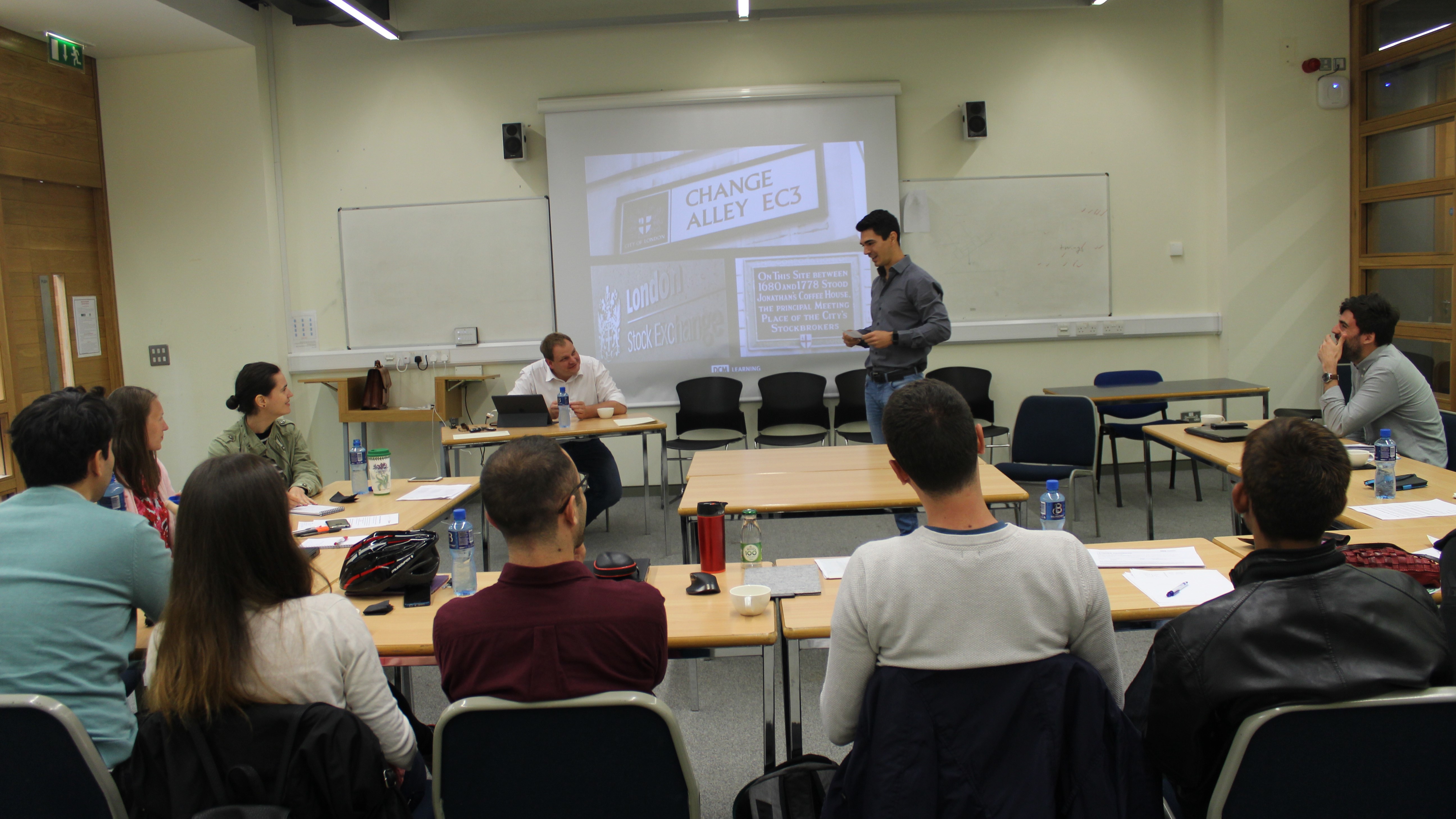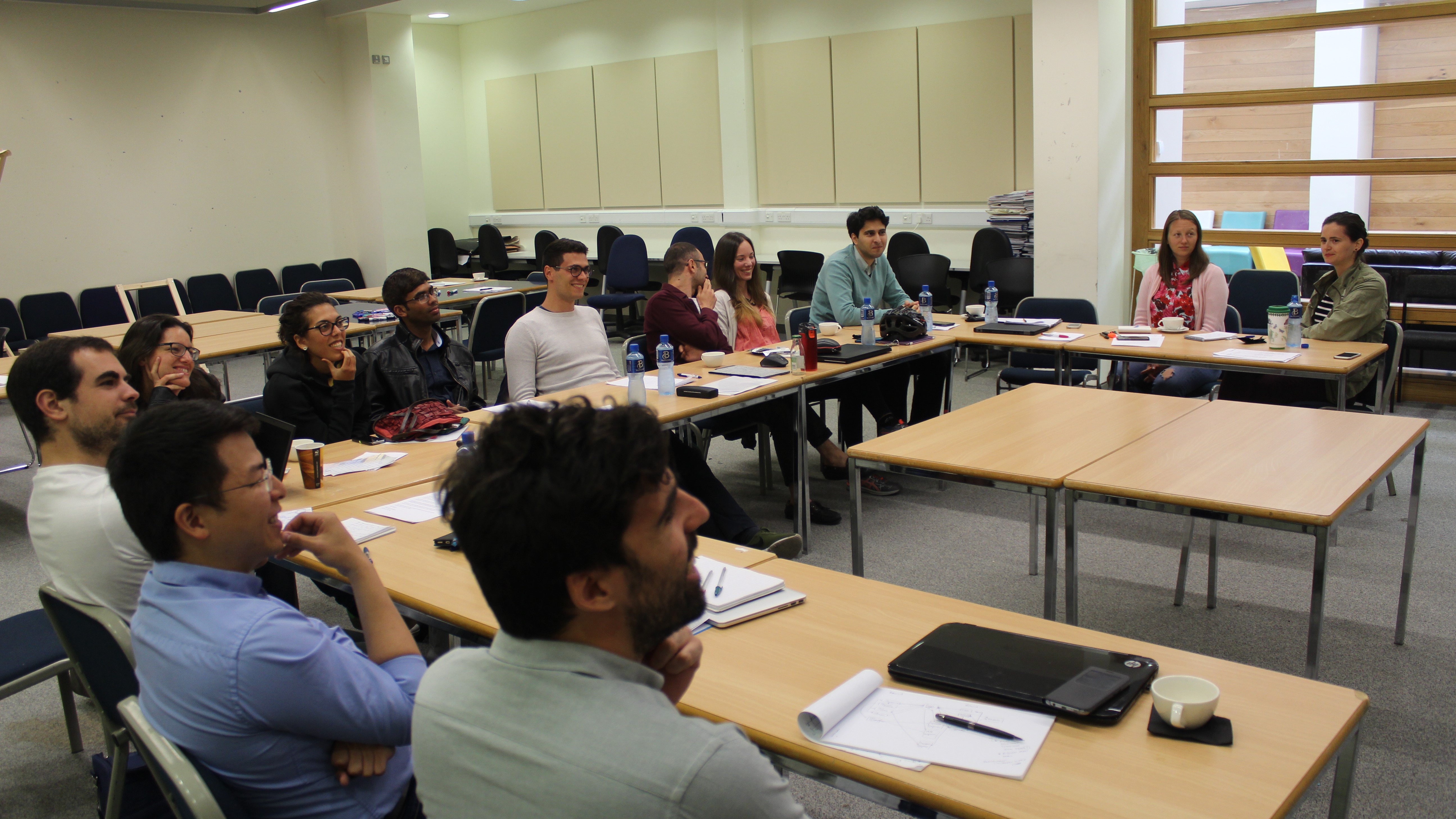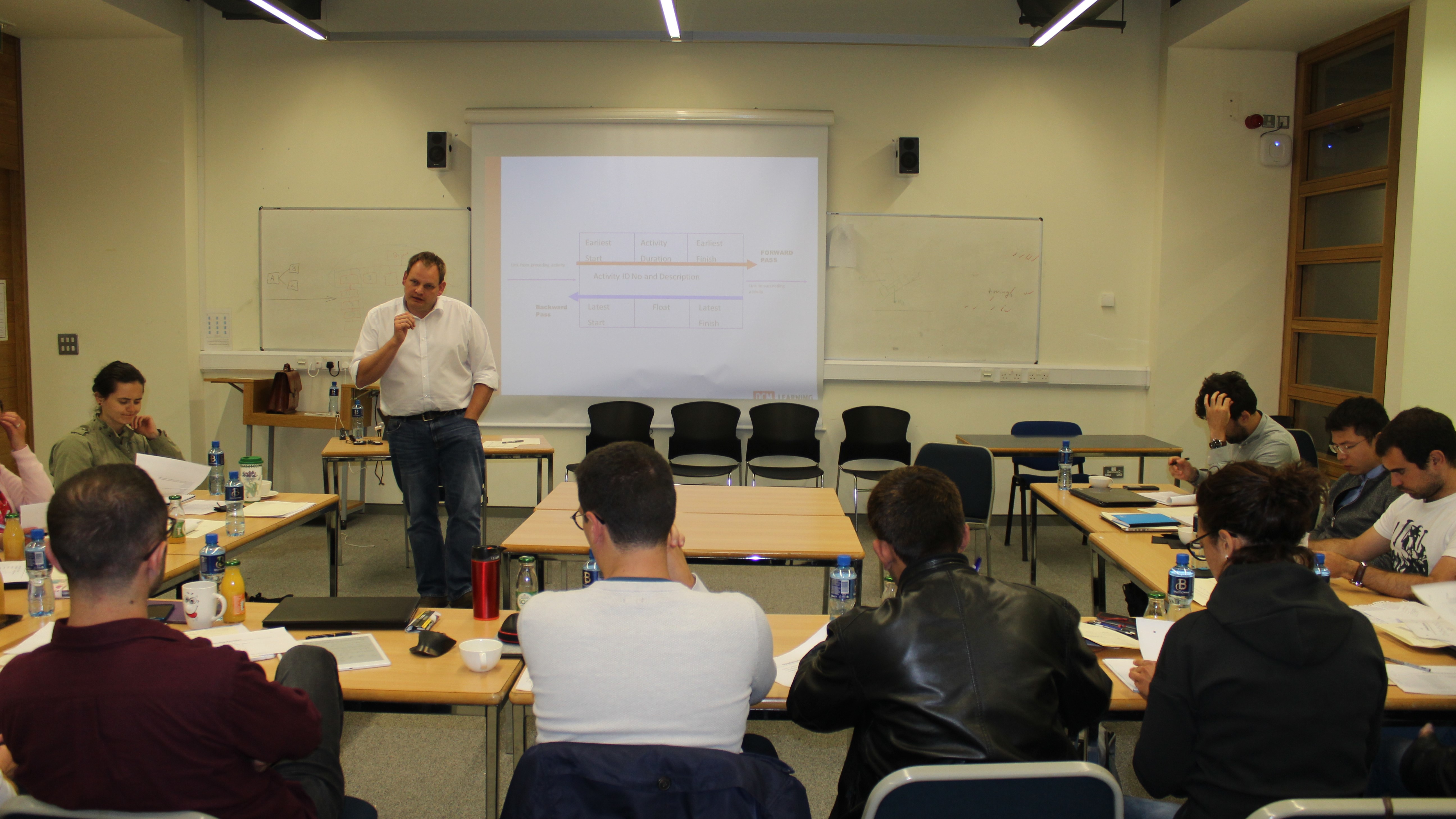This 4 day course was organised by TRUSS and designed by DCM learning to give ESRs a fast track introduction to the skills that are required to work effectively while managing projects of all sizes. By submitting the final written assignment due in six weeks after the last training day, ESRs will receive the QQI Level 6 Certificate. The course was delivered from Andrew Gibson from DCM starting on the 11th June 2018 during 4 consecutive days from 9:30 to 5:00 pm at UCD School of Civil Engineering. Eleven TRUSS ESRs (Sofia Antonopoulou (ESR1), Md Shah Nur Alam Sourav (ESR2), Alberto Gonzalez Merino (ESR3), Rui Teixeira (ESR4), Giulia Milana (ESR6), Farhad Huseynov (ESR7), Barbara Heitner (ESR8), Matteo Vagnoli (ESR9), Daniel Martínez Otero (ESR12), Federico Perrotta (ESR13) and Siyuan Chen (ESR14)), TRUSS Project Manager Parisa Beizaei, and two researchers from outside TRUSS, Elena-Alexandra Micu (from NSF-SFI project on image processing to analyse traffic on bridges) and Emina Balic (from FP7 SUPRA ITN), attended the course. The ESRs were inducted into the Project management concept by participating in group exercises to act as a project manager. The importance of factors such as time management, data collection and analysis, and team-work were discussed and the characteristics of the project manager were defined.
Project management is the application of knowledge, skill, tools, and techniques to project activities to meet project requirements. Project management is accomplished through the application and integration of 5 project management processes as listed below:
- Initiation: Initiation is the first phase of the project lifecycle. This is where the project’s value and feasibility are measured.
- Planning: The project plan gives the team direction for producing quality outputs, handling risk, creating acceptance, communicating benefits to stakeholders and managing suppliers.
- Execution: is all about completing work defined in project management plan to satisfy the project specification through co-ordinating people and resources, and integrating and performing activities as set out in project management plan.
- Monitoring and controlling: Involves controlling changes and recommending preventative actions and influencing factors to circumvent integrated change control ensuring only approved changes are implemented.
- Closing: Teams close a project when they deliver the finished project to the customer, communicating completion to stakeholders and releasing resources to other projects.
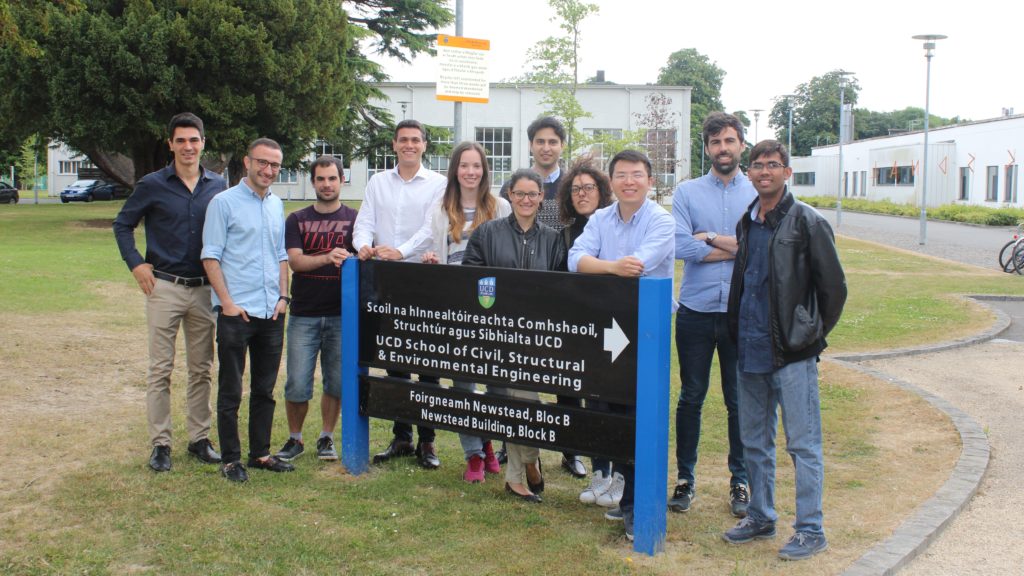
ESRs attending Project Management Course at UCD
Project management isn’t just about assigning and following up on tasks but also the skills a project manager must practice and master to manage a project efficiently. The ten knowledge areas of project management are given below:
What is a stakeholder? “Persons or organisations (customers, sponsors, performing organisation or the public) who are actively involved in the project or whose interest may be positively or negatively affected by the performance or completion of the project” (PMBOK® Guide 5th Edition). Identification of all stakeholders is an important activity of the project manager to ensure project success.
Methods to Analyse Stakeholders:
- Power & Interest Grid: This model classifies stakeholders based on their power and interest in the project. It allocates the stakeholders to one of the categories:
- Power and Influence Grid: this model is somehow similar to the first model and two attributes are assigned to the project stakeholders.
- Salience Model: A classification of stakeholders based on power to influence, the legitimacy of each stakeholder’s relationship with the organisation, and the urgency of the stakeholder’s claim on the organisation.
Project Integration Management: Project Integration Management includes the processes and activities needed to identify, define, combine, unify and coordinate the various processes and activities within the project management process groups.
The following project planning and execution models are used for medium to large projects within organisations where most of the team members are subordinate of the project manager.
Project Charter: Project Charter refers to a statement of objectives in a project. This statement also sets out detailed project goals, roles, and responsibilities identify the main stakeholders, and the level of authority of a project manager.
Business Case: The Business Case is a one-off, start-up document considered by senior management to assess the pros and cons of proposed projects (initiatives), or to assess the options for a project that has already had resources allocated. The Business Case presents the business issue, identifies project options, benefits, costs, risks and defines the scope. A project manager should answer two crucial questions before producing a business plan:
- Is the project aligning with company and market?
- Do we have the capabilities?
The business case will analyse the following economic models:
- Benefit Cost Ratio
- Payback Period
- Present Value
- Net present Value
Work Breakdown Structure: A work breakdown structure (WBS) is a key project deliverable that organises the team’s work into manageable sections. The work breakdown structure visually defines the scope into manageable chunks that a project team can understand, as each level of the work breakdown structure provides further definition and detail.
The key stakeholders need to be constantly reminded of the agreed scope of the project and that any changes will only occur according to the agreed procedures. The Scope Statement or Goal, which was developed at the end of the Initiation Phase is very useful to help control scope creep.
Time management is another key aspect of managing a project. As such, it is considered to be a core knowledge area, and is closely knit to scope and cost areas.
Techniques for Cost and Time Estimation:
- Expert Judgment
- Analogous Estimating Top Down
- Parametric Estimating
- 3 point Estimating
- Reserve Analysis
- Accuracy: Establish levels of rounding
- Units of measure: Currency, staff hours
- Links to the PM Plan: WBS, RBS, Control Accounts
- Control thresholds: Variance +/-, %
- How will we measure performance: Earned Value
- Reporting Structure: Format, Frequency, Stakeholders
- Descriptions of Process for: Estimating costs. Cost Budgets, Control Costs
- Proposal Document
- Project Plan
- Variance Requests
- Status Report
- Specifications – performance, functions, designs
- Quantities
- Quality levels
- Performance data
- Period of performance
- Work locations
- Other – e.g. Response specification, length, deadline
The project manager should also set a legal professional to write the right contract. Common contract types are as below:
- Fixed Price Contracts
- Cost Reimbursable Contracts
- Time & Material Contracts T&M
- Avoidance – plan in such a way to avoid the risk altogether
- Mitigation – plan to reduce the risk
- Acceptance – simply accept the risk if there is no alternative or if it is very unlikely or of little impact
- Procurement – contract out the risk – however the contract still needs to be managed carefully
- Contingency Planning – determine alternative strategies if the risk is triggered
- Insurance – transfer the risk through insurance (also a risky strategy)
- Plan
- Conduct
- Close
- Administer
- Develop Human Resource Plan
- Acquire Project Team
- Develop project Team
- Manage Project Team
RACI Chart: RACI stands for Responsible Accountable Consulted Informed and is a matrix of all the activities or decision making authorities undertaken in an organisation set against all the people or roles.
